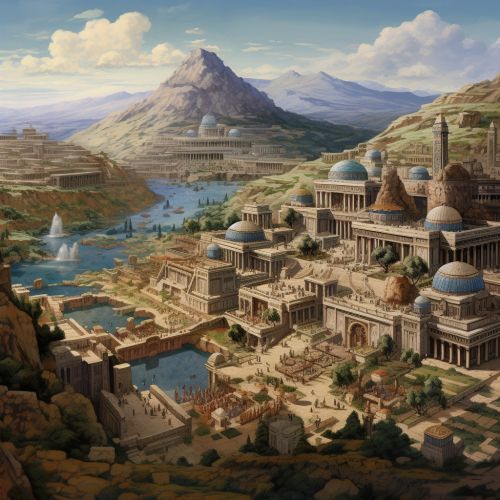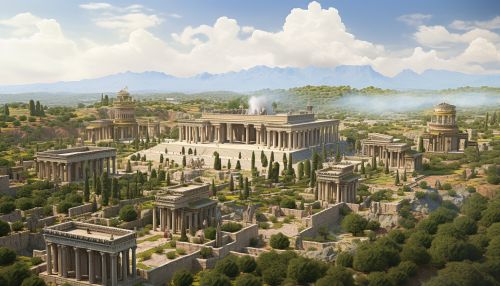Seven Wonders of the Ancient World
Introduction
The Seven Wonders of the Ancient World are a collection of remarkable constructions listed by various Greek authors, including Antipater of Sidon and Philo of Byzantium. The classic list inspired innumerable versions through the ages, often listing seven entries. Of the original Seven Wonders, only one—the Great Pyramid of Giza, the oldest of the ancient wonders—remains relatively intact. The remaining six are known through representations and written descriptions.


The Great Pyramid of Giza
The Great Pyramid of Giza, also known as the Pyramid of Khufu or the Pyramid of Cheops, is the oldest and largest of the three pyramids in the Giza pyramid complex. It is the oldest of the Seven Wonders of the Ancient World, and the only one to remain largely intact. Based on a mark in an interior chamber naming the work gang and a reference to the fourth dynasty Egyptian Pharaoh Khufu, some Egyptologists believe that the pyramid was thus built as a tomb over a 10 to 20-year period concluding around 2560 BC.
Hanging Gardens of Babylon
The Hanging Gardens of Babylon were described as a remarkable feat of engineering: an ascending series of tiered gardens containing all manner of trees, shrubs, and vines. The gardens were said to have looked like a large green mountain constructed of mud bricks. It was said to have been built in the ancient city of Babylon, near present-day Hillah, Babil province, in Iraq.
Statue of Zeus at Olympia
The Statue of Zeus at Olympia was a giant seated figure, about 13 m (43 ft) tall, made by the Greek sculptor Phidias around 435 BC at the sanctuary of Olympia, Greece, and erected in the Temple of Zeus there. It represented the god Zeus sitting on an elaborate cedarwood throne ornamented with ebony, ivory, gold, and precious stones.
Temple of Artemis at Ephesus
The Temple of Artemis or Artemision, also known less precisely as the Temple of Diana, was a Greek temple dedicated to an ancient, local form of the goddess Artemis. It was located in Ephesus (near the modern town of Selçuk in present-day Turkey). It was completely rebuilt three times, and in its final form was one of the Seven Wonders of the Ancient World.
Mausoleum at Halicarnassus
The Mausoleum at Halicarnassus or Tomb of Mausolus was a tomb built between 353 and 350 BC in Halicarnassus (present Bodrum, Turkey) for Mausolus, a satrap in the Persian Empire, and Artemisia II of Caria, who was both his wife and his sister. The structure was designed by the Greek architects Satyros and Pythius of Priene.
Colossus of Rhodes
The Colossus of Rhodes was a statue of the Greek sun-god Helios, erected in the city of Rhodes, on the Greek island of the same name, by Chares of Lindos in 280 BC. It is considered one of the Seven Wonders of the Ancient World. It was constructed to celebrate Rhodes' victory over the ruler of Cyprus, Antigonus I Monophthalmus, whose son unsuccessfully besieged Rhodes in 305 BC.
Lighthouse of Alexandria
The Lighthouse of Alexandria, sometimes called the Pharos of Alexandria, was a lighthouse built by the Ptolemaic Kingdom, during the reign of Ptolemy II Philadelphus, which has been estimated to be at least 100 metres (330 ft) in overall height. Its purpose was to guide sailors into the harbour of Alexandria, Egypt.
See Also
- List of ancient architectural records - Wonders of the World - Ancient Greek architecture
